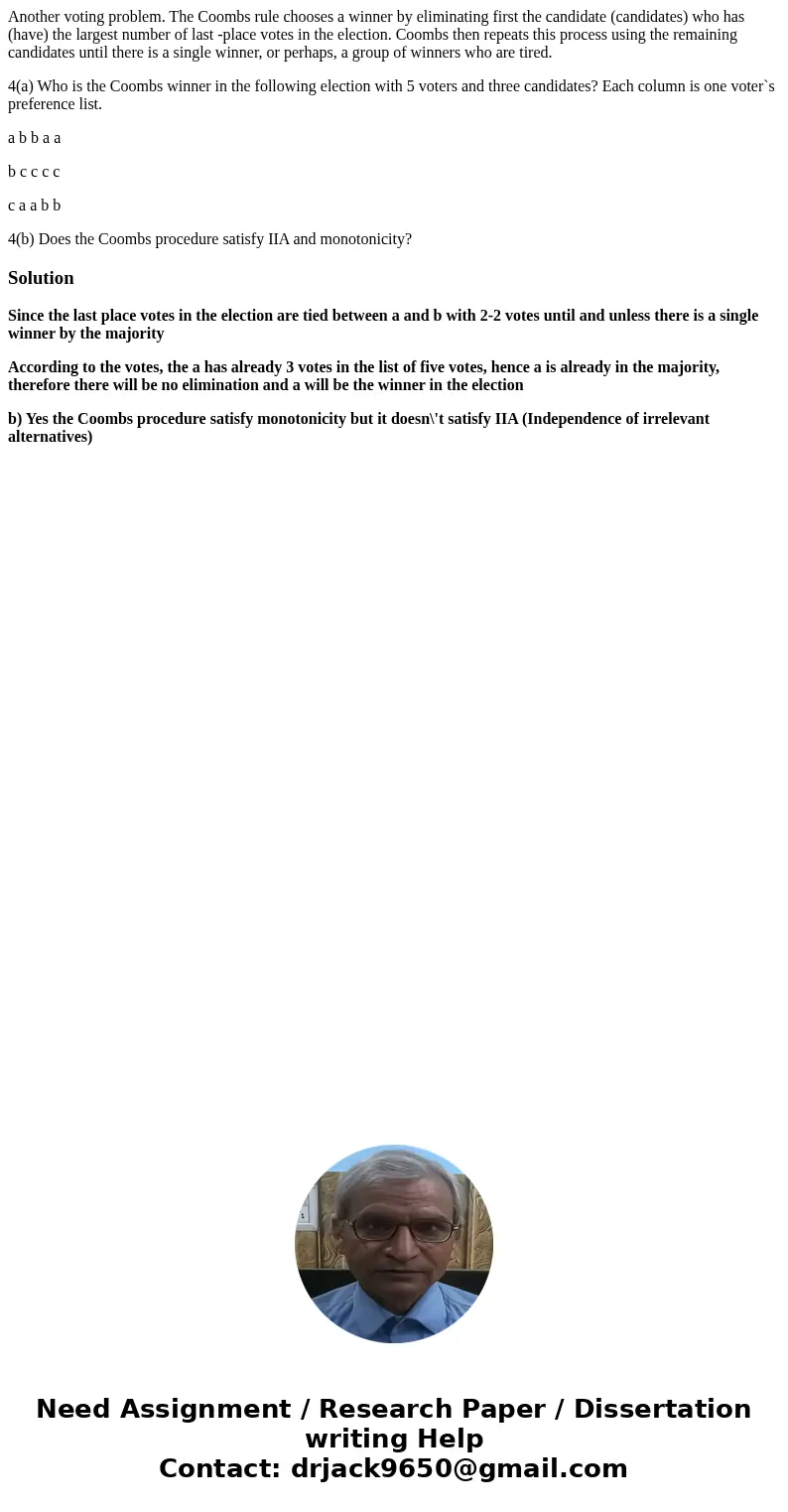Another voting problem The Coombs rule chooses a winner by e
Another voting problem. The Coombs rule chooses a winner by eliminating first the candidate (candidates) who has (have) the largest number of last -place votes in the election. Coombs then repeats this process using the remaining candidates until there is a single winner, or perhaps, a group of winners who are tired.
4(a) Who is the Coombs winner in the following election with 5 voters and three candidates? Each column is one voter`s preference list.
a b b a a
b c c c c
c a a b b
4(b) Does the Coombs procedure satisfy IIA and monotonicity?
Solution
Since the last place votes in the election are tied between a and b with 2-2 votes until and unless there is a single winner by the majority
According to the votes, the a has already 3 votes in the list of five votes, hence a is already in the majority, therefore there will be no elimination and a will be the winner in the election
b) Yes the Coombs procedure satisfy monotonicity but it doesn\'t satisfy IIA (Independence of irrelevant alternatives)

 Homework Sourse
Homework Sourse